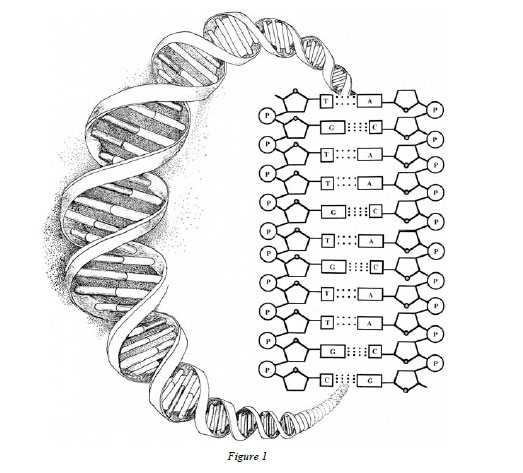The Origin of Intelligent Design
| By: Jonathan Witt, Ph.D., Senior Fellow, Discovery Institute; ©Oct 30, 2007 |
| Critics of the theory of intelligent design often assert that it is simply a repackaged version of creationism, and that it began after the Supreme Court struck down the teaching of creationism in Edwards v. Aguillard in 1987. In reality, the idea of intelligent design reaches back to Socrates and Plato, and the term “intelligent design” as an alternative to blind evolution was used as early as 1897. |
A brief history of the scientific theory of intelligent design
Executive Summary:
Critics of the theory of intelligent design often assert that it is simply a re-packaged version of creationism, and that it began after the Supreme Court struck down the teaching of creationism in Edwards v. Aguillard in 1987. In reality, the idea of intelligent design reaches back to Socrates and Plato, and the term “intelligent design” as an alternative to blind evolution was used as early as 1897. More recently, discoveries in physics, astronomy, information theory, biochemistry, genetics, and related disciplines during the past several decades provided the impetus for scientists and philosophers of science to develop modern design theory. Many of the central ideas for the theory of intelligent design were already being articulated by scientists and philosophers of science by the early 1980s, well before the Edwards v. Aguillard decision.
What is the origin of the theory of intelligent design?
Opponents of the theory often insist that intelligent design emerged as a conspiracy to circumvent the 1987 Supreme Court decision, Edwards vs. Aguillard.[1] There the Court struck down a Louisiana law promoting the teaching of creation science in public school science classes. The theory of intelligent design, critics insist, is merely a clever end-run around this ruling, biblical creationism in disguise.
The problem with this claim is the intelligent design predates Edwards vs. Aguillard by many years. Its roots stretch back to design arguments made by Socrates and Plato,[2] and even the term “intelligent design” is more than 100 years old. Oxford scholar F.C.S. Schiller employed it in an 1897 essay, writing that “it will not be possible to rule out the supposition that the process of Evolution may be guided by an intelligent design.”[3] For a historical time line of the design arguments stretching back to ancient times, and use of the term “intelligent design” in the last two centuries, see the timeline page at ResearchID.org.[4]
In By Design, a history of the current design controversy, journalist Larry Witham traces the roots of the contemporary intelligent design movement in biology to the 1950s and ’60s, and the movement itself to the 1970s.[5] Biochemists were unraveling the secret of DNA and discovering that it was part of an elaborate information processing system that included nanotechnology of unparalleled sophistication. One of the first intellectuals to describe the significance of these discoveries was chemist and philosopher Michael Polanyi, who in 1967 argued that “machines are irreducible to physics and chemistry” and that “mechanistic structures of living beings appear to be likewise irreducible.”[6]
Biochemist Michael Behe would later develop Polanyi’s insights with his concept of irreducible complexity. And mathematician William Dembski would find Polanyi’s work so influential that he would name Baylor University’s Michael Polanyi Center after him.
Polanyi’s work also influenced the seminal 1984 book The Mystery of Life’s Origin by Charles Thaxton (Ph.D., Physical Chemistry, Iowa State University), Walter Bradley (Ph.D., Materials Science, University of Texas, Austin), and Roger Olsen (Ph.D., Geochemistry, Colorado School of Mines). Thaxton and his co-authors argued that matter and energy can accomplish only so much by themselves, and that some things can only “be accomplished through what Michael Polanyi has called ‘a profoundly informative intervention.’”[7]
The book was written under the auspices of the Foundation for Thought and Ethics (FTE), and as the book neared completion, Thaxton and the FTE’s president, Jon Buell, approached origin-of-life researcher Dean Kenyon, author of a leading monograph in the field, Biochemical Predestination, and a professor of biology at San Francisco State University. They feared that Kenyon would reject their argument. Instead, he found the book “an extraordinary new analysis of an age-old question” and volunteered to write the Foreword.
Eventually the book was placed with The Philosophical Library of New York, publisher of numerous Nobel laureates, and became the best-selling advanced college-level work on chemical evolution.[8] Sales were fueled by favorable reviews in prestigious venues like the Yale Journal of Biology and Medicine as well as positive responses from leading scholars. For instance, it received kudos from Klaus Dose in his major review article on origin of life studies, “The Origin of Life: More Questions Than Answers.”
Kenyon and the three authors of the book, it turned out, shared a commitment to investigating the possibility of design in nature without bringing in religious assumptions.
“My approach has always been to look at this question from entirely within a scientific framework,” Kenyon said in a recent telephone interview.[9] “After all, I came to be a dissenter to scientific materialism by looking at the origin of life experiments, including experiments of mine. My transition was from the empirical sciences, through an analysis of the empirical data in origins science, including the paleontological evidence. I grew increasingly uncomfortable presenting conclusions to my students that weren’t backed up by the empirical data.”
Kenyon said he was attracted to The Mystery of Life’s Origin for the cautious and rigorous way it moved from observation to conclusions without drifting into unwarranted assertions about the identity of the first organism’s designer. A key passage from the epilogue illustrates nicely this quality of the book:
- We have observational evidence in the present that intelligent investigators can (and do) build contrivances to channel energy down nonrandom chemical pathways to bring about some complex chemical synthesis, even gene building. May not the principle of uniformity then be used in a broader frame of consideration to suggest that DNA had an intelligent cause at the beginning?[10]
The language here is classic intelligent design vocabulary. We find more of the same in molecular biologist Michael Denton’s 1985 book Evolution: A Theory in Crisis: “The inference to design is a purely a posteriori induction based on a ruthlessly consistent application of the logic of analogy. The conclusion may have religious implications, but it does not depend on religious presuppositions.”[11]
Denton does not characterize himself as a design theorist, but the quotation goes to the heart of the difference between creationism and the theory of intelligent design. The essential difference isn’t whether the writer speaks of the “creation of DNA” versus the “intelligent design of DNA.” The difference is more substantive than stylistic. Creationism or Creation Science is focused on defending a particular reading of the Genesis account, usually including the creation of the earth by the Biblical God a few thousand years ago. The theory of intelligent design isn’t based on religious presuppositions but simply argues that an intelligent cause is the best explanation for certain features of the natural world. Unlike the creationism on trial in Edwards vs. Aguillard, the theory of intelligent design does not consider the identity of the designer nor does it defend the Genesis account (or that of any other sacred text for that matter). This is why a former atheist like British philosopher Antony Flew, who rejects the Judeo-Christian God, can nevertheless embrace the intelligent design argument for the origin of life.[12]
The fact that intelligent design doesn’t identify the source of design is not political calculation but precise thinking, refusing to go beyond what the scientific evidence tells us. Consider intelligent design’s most famous design inference, the bacterial flagellum. Michael Behe shows that this microscopic rotary engine, like an automobile engine, needs all of its machinery in place to function at all. The best explanation for this irreducibly complex machine is intelligent design, but there’s no inscription on the bushing of this little motor that identifies its maker. To discover the identity of its designer(s), one has to look beyond science.
The term “intelligent design” was used to communicate this fact. In a recent telephone interview, Charles Thaxton told how, as he explored the idea of intelligent causation in the origin of life, he would sometimes use the term “create.”[13] The term has a perfectly neutral dictionary meaning, but he said he became more and more aware that the term was at once too broad and too specific. Search Google Scholar for academic references in biology to “creation,” and one gets more than 50,000 hits, often referring merely to biological processes that bring certain structures into being. To create simply means to cause something to exist.[14]
More problematic was that fact that many of Thaxton’s listeners would project into any form of the word “create” the Biblical account of creation. Since the evidence he and other design theorists were presenting said nothing about whether the God of the Bible was the source of that design, increasingly they avoided the term.
In the same year The Mystery of Life’s Origin appeared, Thaxton met Stephen Meyer, a young geophysicist and future program director of Discovery Institute’s Center for Science & Culture, now the institutional home for scientists and scholars around the globe working on the theory of intelligent design. Thaxton, Meyer, and others were by that time (1984) already using terms like creative intelligence, intelligent cause, artificer, and intelligent artificer as they grappled together with questions of design detection in science.
As the academic editor for the Foundation of Thought and Ethics, Thaxton was then serving as the editor for a supplemental science textbook co-authored by Kenyon, named Of Pandas and People: The Central Question of Biological Origins. As it neared completion, Thaxton continued to cast around for a term that was less ponderous and, at the same time, more general, a term to describe a science open to evidence for intelligent causation and free of religious assumptions. He found it in a phrase he picked up from a NASA scientist. “That’s just what I need,” Thaxton recalls thinking. “It’s a good engineering term…. After I first saw it, it seemed to jibe. When I would go to meetings, I noticed it was a phrase that would come up from time to time. And I went back through my old copies of Science magazine and found the term used occasionally.” It was soon incorporated into the language of the book.
From the uses Thaxton ran across at conferences and in his back issues of Science, Thaxton saw that intelligent design was already a functioning term in science, and it was just a matter of extending the term to the process of design detection in natural structures. “I knew from Polanyi that the laws of chemistry and physics were not responsible for the sequencing of the nucleotides,” Thaxton said, “but I didn’t know how to link that to intelligence till I read Hubert Yockey’s paper in 1981 that there is a structural identity between the nucleotide sequences in DNA and the alphabetical letter sequences in a book.”[15]
Yockey wrote, “It is important to understand that we are not reasoning by analogy. The sequence hypothesis [that the exact order of symbols records the information] applies directly to the protein and the genetic text as well as to written language and therefore the treatment is mathematically identical.”[16] Yockey is not a proponent of intelligent design, but the passage marked a turning point for Thaxton: “As soon as I made the connection that it wasn’t just analogy but the treatment of these was mathematically identical, I said, ‘Well, if the treatments are mathematically identical and I know that intelligence is responsible for the alphabetical letter sequence, then I’m on safe ground when I say that intelligence is responsible for the sequencing of the nucleotides.’”[17]
The theory of intelligent design in biology emerged, in large part, from these attempts to grapple with the biological information revolution of the ‘60s and ‘70s. In his 1985 critique of modern evolutionary theory, Michael Denton commented, “It has only been over the past twenty years with the molecular biological revolution and with the advances in cybernetic and computer technology that [philosopher David] Hume’s criticism has been finally invalidated and the analogy between organisms and machines has at last become convincing.”[18]
The theory of intelligent design is larger than Edwards vs. Aguillard. It’s also larger than biology—a point usually missed by journalists eager to roll the debate into the rusty boilerplate of the Scopes Monkey Trial and its Hollywood caricature, Inherit the Wind. The 20th century provided powerful new evidence for design not only in microbiology but also in chemistry, physics, and cosmology.
If the universe were eternal, as was conventional scientific wisdom at the beginning of the 20th century, then its origin didn’t need to be explained: it had no origin. But if it had a beginning, then obviously there was some explaining to do. Who or what made it? In the 1920s, Edwin Hubble discovered that light from distant galaxies had stretched on its way to earth, suggesting that the universe is expanding. This, coupled with the discovery of the microwave background radiation in the 1960s, convinced most scientists that the universe was not eternal but rather began in the finite past.
And beginning with Fred Hoyle’s discovery of the carbon-12 resonance in the early 1950s,[19] physicists began uncovering a number of ways the universal constants of physics and chemistry (gravity, the strong and weak nuclear forces, etc.) were fine tuned for complex life. Reviewing these developments in 1982, leading theoretical physicist Paul Davies described the fine-tuning of the universe as “the most compelling evidence for an element of cosmic design.”[20]
Hoyle, an eminent theoretical physicist and agnostic, followed with The Intelligent Universe (1983), featuring chapter titles like “The Information Rich Universe” and “What is Intelligence Up To?” Hoyle, no friend of Christianity or Biblical creationism, nevertheless asserted, “A component has evidently been missing from cosmological studies. The origin of the Universe, like the solution of the Rubik cube, requires an intelligence.”[21]
Or as Hoyle said elsewhere, “A commonsense interpretation of the facts suggests that a superintellect has monkeyed with physics, as well as chemistry and biology, and that there are no blind forces worth speaking about in nature.”[22]
Hoyle’s argument, thus, extended even to the realm of biology. “We are close here to what seems to be going on in the mind of the Darwinian enthusiast, whose processes of thought seem to be conditioned by the tacit assumption that the environment is intelligent, an idea which I would in part subscribe to, but one which in Darwinian theory is quite against the rules.” Hoyle wrote in the same 1983 book. “A proper understanding of evolution requires that the environment, or the variations on which it operates, or both, be intelligently controlled.”[23]
By now even this brief survey has brought certain facts sharply into focus. Although its roots stretch back to Plato, the modern intelligent design movement sprang from fresh discoveries in astronomy, physics, chemistry and biology. It’s older than Edwards vs. Aguillard and much bigger than current battles over science education.
Some opponents of intelligent design, however, aren’t interested in debating the evidence. They prefer to pretend that the intellectual work of scientists like Dean Kenyon revolve around Edwards vs. Aguillard. The theory of intelligent design owes much to law, but the laws it concerns itself with are the laws of nature. The second half of the 20th century revealed that they are exquisitely fine-tuned for life. It also revealed that while life needs a finely tuned set of physical constants, it apparently also needs something that only intelligence can provide—information. Critics of intelligent design could do with more of it.
Notes
- ↑ 482 U.S. 578 (1987).
- ↑ See Xenophon, Memorabilia of Socrates, Book I, chapter 4; Plato, The Laws, Book X.
- ↑ F.C. S. Schiller, “Darwinism and Design Argument,” in Schiller, Humanism: Philosophical Essays (New York: The Macmillan Co., 1903), 141. This particular essay was first published in the Contemporary Review in June 1897.
- ↑ http://www.researchintelligentdesign.org/wiki/Intelligent_design_timeline
- ↑ Larry Witham, By Design (San Francisco: Encounter Books, 2003).
- ↑ Michael Polanyi, “Life transcending physics and chemistry,”Chemical and Engineering News, 45(35), 21 August 1967, pp. 54-66.
- ↑ Charles B. Thaxton, Walter L. Bradley, and Roger L. Olsen, The Mystery of Life’s Origin, (Dallas: Lewis and Stanley, 1984), 185.
- ↑ Interview with Jon Buell by the author, 9.21.05. The Klaus review essay appeared in Interdisciplinary Science Reviews, 13.4, 1988.
- ↑ Interview with Dean Kenyon by the author, 8.18.05.
- ↑ The Mystery of Life’s Origins, 211.
- ↑ Michael Denton, Evolution: A Theory in Crisis, (Great Britain: Burnett Books, 1985), 341.
- ↑ Antony Flew, interview by Gary Habermas, Philosophia Christi, Winter 2005.
- ↑ Interview with Charles Thaxton by the author, 8.16.05.
- ↑ Interview with Jon Buell by the author, 9.21.05.
- ↑ Interview with Charles Thaxton by the author, 8.16.05.
- ↑ Hubert P. Yockey, 1981. “Self Organization Origin of Life Scenarios and Information Theory,” Journal of Theoretical Biology, 91, 13.
- ↑ Interview with Charles Thaxton by the author, 8.16.05.
- ↑ Denton, 340.
- ↑ Fred Hoyle, “On Nuclear Reactions Occurring in Very Hot Stars. I. The Synthesis of Elements from Carbon to Nickel,” Astrophysical Journal Supplement 1 (1954): 121-146.
- ↑ Paul Davies, The Accidental Universe, (Cambridge: Cambridge UP, 1982), 189.
- ↑ Fred Hoyle, The Intelligent Universe, (New York: Holt, Rinehart, and Winston, 1983), 189.
- ↑ Hoyle is here qtd. in Davies, The Accidental Universe, 118.
- ↑ The Intelligent Universe, 244.









[…] The Origin of Intelligent Design […]